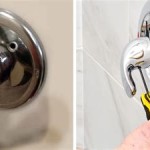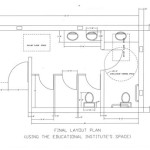Stink Coming From the Bathroom Sink: Causes and Solutions
A foul odor emanating from your bathroom sink can be an unpleasant and perplexing experience. While the source of the smell may seem mysterious, it typically points to an underlying issue that needs attention. This article explores common causes for a smelly bathroom sink and provides practical solutions to address the problem.
1. Drain Trap Issues
The drain trap, a curved pipe located beneath the sink, serves a crucial role in preventing sewer gases from entering your home. When the drain trap dries out, it can allow these gases to escape, leading to a foul odor. This situation can occur due to infrequent sink use, a faulty trap seal, or evaporation over time.
To remedy this issue, you can try pouring a cup of water down the drain to refill the trap. If the odor persists, it may indicate a problem with the trap seal. In this case, consider using a plumber's snake to remove any obstructions that may be blocking the trap's flow. If the issue is due to evaporation, you can add a few drops of mineral oil to the trap to create a barrier and prevent future evaporation.
2. Hair and Debris Buildup
Hair, soap scum, and other debris can accumulate in the sink's drainpipe, creating a breeding ground for bacteria and producing a foul odor. This buildup can also restrict water flow and contribute to slow drainage.
To address this problem, you can use a commercial drain cleaner specifically designed for hair and debris removal. Follow the product's instructions carefully, wearing appropriate protective gear during application. Alternatively, you can try a natural solution by pouring a mixture of baking soda and vinegar down the drain, followed by hot water. The fizzing action helps break down the buildup. For more stubborn clogs, a plumber's snake may be necessary to remove the obstruction.
3. Sewer Line Problems
The smell may originate from the sewer line itself, rather than the sink drain. If you notice a persistent odor despite cleaning the drain, it could indicate a blockage or leak in the sewer line. This issue can be more complex and may require professional intervention.
If you suspect a sewer line problem, contact a qualified plumber for inspection and repair. They can use tools like a sewer camera to identify the source of the blockage or leak.
4. P-Trap Issues
The p-trap, located below the sink, acts as a barrier to prevent sewer gases from entering the house. If the p-trap is damaged or disconnected, it can allow these gases to escape, resulting in a foul odor.
To check for p-trap issues, inspect the pipe connection under the sink. Look for any loose or broken connections. If the trap is damaged, it will need to be replaced.
Regular maintenance is essential to preventing smelly bathroom sink problems. Here are some tips for keeping your bathroom sink clean and odor-free:
- Clean your sink regularly with a disinfectant cleaner.
- Avoid pouring grease, oils, or food down the drain.
- Use a drain strainer to catch hair and debris.
- Pour a cup of baking soda followed by a cup of vinegar down the drain once a month to help prevent buildup.
- Contact a plumber for any leaks or clogs that you cannot resolve yourself.

How To Clean A Stinky Sink Drain Home Repair Tutor

How Can I Help A Stinky Bathroom Sink Drain Cleaning More
What The Heck In This Ugly Black Stuff My Wife Has Been Complaining About A Nasty Smell Coming From Her Bathroom Sink Since We Moved Into Our New House Two Years Ago

How To Get Rid Of The Sewer Smell From A Bathroom Terry S Plumbing

Sewer Smell In Bathroom Solved Bob Vila

How To Treat Smelly Water Finkens

What Causes Bathroom Drains To Smell

Why Your Bathroom Sink Drain Smells

Moldy Smelling Water From Bathroom Faucet Hometalk

Why Is There A Bad Smell Coming From My Bathroom Sink
Related Posts







